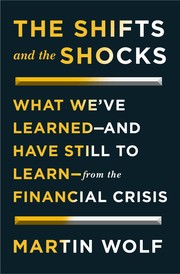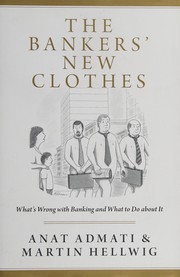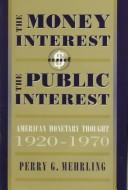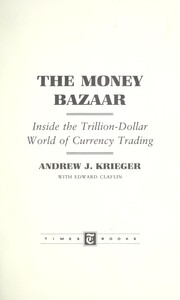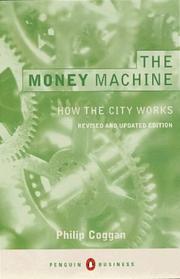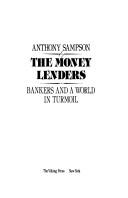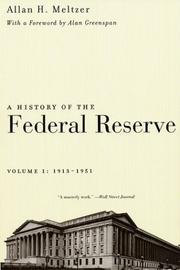Are you looking to delve into the complex world of monetary policy? Whether you’re an economist, a finance professional, or simply interested in understanding how monetary policy shapes our economy, there are a plethora of books on monetary policy that offer valuable insights. In this article, we’ve curated a list of the 20 best books about monetary policy that will provide you with a comprehensive understanding of this crucial aspect of economics.
Contents
- 1 20 Best Books About Monetary Policy
- 2 The Alchemists: Three Central Bankers and a World on Fire
- 3 The End of Alchemy: Money, Banking, and the Future of the Global Economy
- 4 The Curse of Cash
- 5 The Shifts and the Shocks: What We’ve Learned and Have Still to Learn from the Financial Crisis
- 6 The Money Problem: Rethinking Financial Regulation
- 7 The Bankers’ New Clothes: What’s Wrong with Banking and What to Do about It
- 8 The Age of Stagnation: Why Perpetual Growth Is Unattainable and the Global Economy Is in Peril
- 9 The Money Cult: Capitalism, Christianity, and the Unmaking of the American Dream
- 10 The End of Normal: The Great Crisis and the Future of Growth
- 11 The Money Men: Capitalism, Democracy, and the Hundred Years’ War over the American Dollar
- 12 The Money Interest and the Public Interest: American Monetary Thought, 1920-1970
- 13 The Money Bazaar: Inside the Trillion-Dollar World of Currency Trading
- 14 The Money Machine: How the City Works
- 15 The Money Game
- 16 The Money Illusion
- 17 The Money Lenders: Bankers and a World in Turmoil
- 18 The Age of Turbulence: Adventures in a New World
- 19 The Federal Reserve and the Financial Crisis
- 20 The New Lombard Street: How the Fed Became the Dealer of Last Resort
- 21 A History of the Federal Reserve, Volume 1: 1913-1951
- 22 Conclusion
- 23
- 24 Books on The Cold War: 2024 Update of the Best Titles
- 25 20 Making Money Best Books to Read – The 2024 Edition
- 26 Top 20 Best Books on Chinpolitics:2024 Edition
20 Best Books About Monetary Policy
The Alchemists: Three Central Bankers and a World on Fire
by Neil Irwin
The Alchemists: Three Central Bankers and a World on Fire by Neil Irwin is a captivating book on monetary policy, delving into the world of central banking and its impact on the global economy. Irwin takes readers on a journey through the financial crisis of 2008, examining the roles of three influential central bankers: Ben Bernanke, Mervyn King, and Jean-Claude Trichet. Through detailed research and insightful analysis, the book offers a behind-the-scenes look at the decisions and actions of these key figures as they navigated the tumultuous economic landscape. Irwin skillfully weaves together the personal stories of these central bankers with the larger narrative of the crisis, providing a compelling and informative account of the inner workings of monetary policy. The Alchemists is a must-read for anyone interested in understanding the intricacies of central banking and its impact on the global financial system.
The End of Alchemy: Money, Banking, and the Future of the Global Economy
by Mervyn King
The End of Alchemy by Mervyn King is a thought-provoking book on monetary policy that delves into the complexities of the global economy. King, the former Governor of the Bank of England, provides a comprehensive overview of the fundamental issues facing the world’s financial systems and offers insightful perspectives on the future of banking and money. The book explores the limitations and failures of the current monetary policy framework, and King presents his ideas on how to reform the system to prevent future economic crises. With a blend of historical analysis and forward-thinking proposals, The End of Alchemy is a must-read for anyone interested in understanding the intricacies of modern finance and the challenges that lie ahead for the global economy.
The Curse of Cash
by Kenneth S. Rogoff
The Curse of Cash by Kenneth S. Rogoff is a thought-provoking book on monetary policy that challenges the traditional view of cash as a vital part of the economy. Rogoff argues that the widespread use of cash fuels crime, tax evasion, and corruption, and proposes a gradual phasing out of large-denomination notes to curb these negative impacts. The book delves into the history and implications of cash, exploring the potential benefits of a cashless society and the challenges it presents. Rogoff’s compelling analysis and persuasive arguments make this book about monetary policy a must-read for anyone interested in the future of currency and the potential impact on the global economy.
The Shifts and the Shocks: What We’ve Learned and Have Still to Learn from the Financial Crisis
by Martin Wolf
The Shifts and the Shocks: What We’ve Learned and Have Still to Learn from the Financial Crisis by Martin Wolf is a compelling book on monetary policy that delves into the causes and aftermath of the 2008 global financial crisis. Wolf, a renowned economist, provides a comprehensive analysis of the economic shifts and policy responses that have shaped the post-crisis world. Through clear and insightful prose, he examines the failures of financial regulation, the impact of globalization, and the challenges facing central banks in the wake of the crisis. This monetary policy book offers a thought-provoking look at the lessons learned from the crisis and the ongoing debates about how to safeguard the global economy from future shocks. Whether you’re an economist, policy maker, or simply interested in understanding the complexities of modern finance, this book is a must-read.
The Money Problem: Rethinking Financial Regulation
by Morgan Ricks
The Money Problem: Rethinking Financial Regulation by Morgan Ricks is a thought-provoking book on monetary policy that challenges conventional wisdom about the regulation of the financial system. Ricks argues that the current approach to regulating the money supply is flawed, and proposes a new system to address the root causes of financial instability. He delves into the complexities of modern banking, the role of central banks, and the impact of financial crises on the economy. The book offers a fresh perspective on the relationship between government and the financial sector, and provides a compelling case for reforming the way we think about and regulate money. Ricks’ insightful analysis and compelling arguments make this a must-read for anyone interested in understanding the intricacies of our financial system and the potential for change.
The Bankers’ New Clothes: What’s Wrong with Banking and What to Do about It
by Anat Admati and Martin Hellwig
The Bankers’ New Clothes: What’s Wrong with Banking and What to Do about It by Anat Admati and Martin Hellwig is a thought-provoking book about monetary policy that challenges the traditional banking system. The authors argue that the banking industry is in need of serious reform and provide compelling evidence to support their claims. They address key issues such as excessive leverage, inadequate regulation, and the lack of accountability within the banking sector. Admati and Hellwig propose practical solutions to these problems, offering a new perspective on how to create a more stable and sustainable banking system. This book is essential reading for anyone interested in understanding the complexities of banking and the potential impact of policy changes. It is a must-read for policymakers, economists, and anyone concerned about the future of the financial industry.
The Age of Stagnation: Why Perpetual Growth Is Unattainable and the Global Economy Is in Peril
by Satyajit Das
The Age of Stagnation: Why Perpetual Growth Is Unattainable and the Global Economy Is in Peril by Satyajit Das is a thought-provoking book on monetary policy that challenges the traditional belief in endless economic growth. Das provides a comprehensive analysis of the current global economic landscape, highlighting the unsustainable nature of perpetual growth and the risks it poses to the world economy. Through a combination of historical context, economic theory, and real-world examples, Das offers a compelling argument for why the global economy is in peril and why traditional monetary policy may no longer be effective. This insightful and engaging book about monetary policy is a must-read for anyone seeking a deeper understanding of the challenges facing the global economy and the limitations of traditional economic thinking.
The Money Cult: Capitalism, Christianity, and the Unmaking of the American Dream
by Chris Lehmann
The Money Cult: Capitalism, Christianity, and the Unmaking of the American Dream by Chris Lehmann offers a thought-provoking exploration of the intersection between capitalism, Christianity, and the American Dream. Lehmann delves into the historical and cultural forces that have shaped the American obsession with wealth and success, drawing on a wide range of sources to illustrate how these ideals have influenced society and politics. This insightful book on monetary policy challenges traditional narratives and sheds light on the complex relationship between religion and economics in America. Lehmann’s engaging writing style and in-depth analysis make this a must-read for anyone interested in understanding the impact of capitalism and Christianity on the American psyche.
The End of Normal: The Great Crisis and the Future of Growth
by James K. Galbraith
The End of Normal by James K. Galbraith is a thought-provoking book about monetary policy that challenges the conventional wisdom on economic growth. Galbraith argues that the 2008 financial crisis marked the end of an era and that the old models of growth are no longer applicable. He delves into the complexities of the global economy and offers a compelling analysis of the factors that have led to stagnant growth and increasing inequality. Galbraith’s insightful exploration of the intersection between economics and politics makes this book on monetary policy a must-read for anyone seeking to understand the current state of the world economy. With its well-researched arguments and engaging writing style, The End of Normal is a timely and important contribution to the ongoing conversation about the future of growth.
The Money Men: Capitalism, Democracy, and the Hundred Years’ War over the American Dollar
by H.W. Brands
The Money Men by H.W. Brands is a captivating book about the century-long battle over the American dollar, exploring the intricate relationship between capitalism, democracy, and the US monetary system. Brands delves into the evolution of monetary policy, from the early days of the American Republic to the present day, offering a comprehensive overview of the key players and pivotal moments that have shaped the nation’s economic landscape. Through vivid storytelling and meticulous research, Brands provides a thought-provoking analysis of the constant struggle for control and influence over the dollar, shedding light on the profound impact of economic decisions on American society. This book about monetary policy is a must-read for anyone interested in understanding the complex interplay between politics, economics, and the enduring quest for financial stability.
The Money Interest and the Public Interest: American Monetary Thought, 1920-1970
by Perry G. Mehrling
The Money Interest and the Public Interest: American Monetary Thought, 1920-1970 by Perry G. Mehrling is a captivating book about monetary policy in the United States during the first half of the 20th century. Mehrling delves into the intricate relationship between the financial sector and the broader public interest, providing a thorough examination of the economic theories and debates that shaped American monetary policy during this pivotal period. Through a meticulous analysis of the works of leading economists and policymakers, Mehrling offers valuable insights into the evolution of monetary thought and its impact on the country’s economic landscape. This book is an essential read for anyone interested in understanding the complexities of monetary policy and its implications for the public welfare. Mehrling’s engaging narrative and in-depth research make this a must-read for those seeking a deeper understanding of the intricacies of monetary policy.
The Money Bazaar: Inside the Trillion-Dollar World of Currency Trading
by Andrew Krieger
The Money Bazaar: Inside the Trillion-Dollar World of Currency Trading by Andrew Krieger is a captivating exploration of the fast-paced and high-stakes world of currency trading. Krieger, a seasoned currency trader, provides readers with an insider’s perspective on the intricacies of the global foreign exchange market. Through his firsthand experiences and expert analysis, Krieger delves into the factors that drive currency fluctuations and the strategies used by traders to navigate these volatile waters. This book on monetary policy offers valuable insights into the complexities of currency trading and the impact it has on the global economy. Whether you’re a novice or a seasoned investor, The Money Bazaar is sure to provide a compelling and informative look into the trillion-dollar world of currency trading.
The Money Machine: How the City Works
by Philip Coggan
The Money Machine: How the City Works by Philip Coggan is a fascinating book about monetary policy that offers an in-depth exploration of the financial world. Coggan takes readers on a journey through the intricate workings of the City of London, revealing the inner mechanisms that drive the global economy. With a keen eye for detail and a clear, accessible writing style, the author delves into the complexities of banking, investing, and regulation, shedding light on the interconnected nature of modern finance. Through compelling storytelling and insightful analysis, Coggan demystifies the often opaque world of high finance, making it a compelling read for anyone interested in understanding the forces that shape our economic landscape. Whether you’re an industry professional or a curious layperson, The Money Machine offers a wealth of knowledge about the book on monetary policy that is both enlightening and engaging.
The Money Game
by Adam Smith
The Money Game by Adam Smith is a captivating book on monetary policy that explores the world of finance and investment. Smith takes readers on a journey through the ups and downs of the stock market, offering insights into the psychology of investors and the complexities of the financial industry. Through engaging storytelling and witty observations, the author provides valuable lessons on how to navigate the unpredictable nature of the market and make informed investment decisions. Whether you’re a seasoned investor or just starting out, this book about monetary policy is a must-read for anyone looking to gain a deeper understanding of the forces that shape the economy. With its timeless wisdom and entertaining narrative, The Money Game is a classic monetary policy book that continues to resonate with readers today.
The Money Illusion
by Irving Fisher
The Money Illusion by Irving Fisher is a groundbreaking book on monetary policy that challenges conventional economic thinking. Fisher’s work explores the concept of “money illusion,” the tendency for people to confuse nominal and real values. He argues that this confusion leads to suboptimal decision-making in both individual and macroeconomic contexts. Fisher’s clear and engaging writing style makes this book about monetary policy accessible to a wide audience, from seasoned economists to curious readers interested in understanding the intricacies of monetary policy. With its relevant insights into the role of money in the economy and its implications for policy-making, The Money Illusion is a must-read for anyone seeking to deepen their understanding of this complex and crucial topic.
The Money Lenders: Bankers and a World in Turmoil
by Anthony Sampson
The Money Lenders: Bankers and a World in Turmoil by Anthony Sampson is a captivating book about monetary policy that delves into the complex world of international finance and the power wielded by bankers. Sampson provides a fascinating exploration of the history and inner workings of global banking, offering insights into the impact of financial institutions on economies and societies around the world. Through meticulous research and compelling storytelling, the author sheds light on the role of bankers in shaping the turbulent economic landscape and the profound consequences of their decisions. This monetary policy book offers a thought-provoking examination of the intricate relationships between money, power, and politics, making it essential reading for anyone seeking to understand the forces that drive our modern financial system.
The Age of Turbulence: Adventures in a New World
by Alan Greenspan
The Age of Turbulence: Adventures in a New World by Alan Greenspan is a captivating memoir and insightful analysis of the global economy. Greenspan, a former chairman of the Federal Reserve, shares his experiences and perspectives on the world of finance, offering a unique insider’s view of economic events and policies. This book delves into the complexities of economic decision-making, providing a deep understanding of the intricacies of financial systems and their impact on the world. Whether you’re a finance enthusiast or simply curious about the inner workings of the economy, this book on monetary policy is a must-read. Greenspan’s expertise and engaging storytelling make The Age of Turbulence a fascinating and informative exploration of the challenges and opportunities in the ever-changing world of finance.
The Federal Reserve and the Financial Crisis
by Ben S. Bernanke
The Federal Reserve and the Financial Crisis by Ben S. Bernanke provides a comprehensive analysis of the 2008 financial crisis and the Federal Reserve’s response to it. Bernanke, the former Chairman of the Federal Reserve, offers an insider’s perspective on the decisions and policies that shaped the central bank’s actions during one of the most challenging periods in global finance. This book on monetary policy delves into the intricacies of the crisis, the tools used by the Fed to stabilize the economy, and the implications for future monetary policy. Bernanke’s expertise and clear writing style make this book about monetary policy a must-read for anyone seeking to understand the role of the Federal Reserve in managing financial crises and promoting economic stability.
The New Lombard Street: How the Fed Became the Dealer of Last Resort
by Perry Mehrling
The New Lombard Street: How the Fed Became the Dealer of Last Resort by Perry Mehrling is an engaging and insightful book about monetary policy. Mehrling delves into the history of central banking and the evolution of the Federal Reserve, shedding light on how the Fed became the crucial ‘dealer of last resort’ in times of financial crisis. The book explores the complexities of modern financial markets and the challenges facing central banks in maintaining stability. Mehrling’s analysis is both accessible and thought-provoking, making this a must-read for anyone interested in understanding the intricacies of monetary policy and the role of central banks in the global economy. Whether you’re a seasoned economist or simply curious about the workings of the financial system, The New Lombard Street offers a compelling and comprehensive exploration of this crucial aspect of modern economics.
A History of the Federal Reserve, Volume 1: 1913-1951
by Allan H. Meltzer
A History of the Federal Reserve, Volume 1: 1913-1951 by Allan H. Meltzer is a comprehensive and engaging book on monetary policy. Meltzer, a renowned economist, provides an in-depth analysis of the Federal Reserve’s role in shaping the American economy during its formative years. The book covers the establishment of the Federal Reserve, its response to the Great Depression, and its role in financing World War II. Meltzer’s meticulous research and clear writing style make this book about monetary policy a valuable resource for anyone interested in understanding the history of central banking in the United States. Whether you’re an economist, historian, or simply curious about how monetary policy has evolved over the years, this monetary policy book is a must-read.
Conclusion
In conclusion, these 20 books about Monetary Policy offer a comprehensive and insightful look into the intricate world of economic governance. Whether you’re a student, economist, or simply curious about the topic, these books provide valuable knowledge and perspectives on the subject. From historical analyses to practical guides, there’s something for everyone interested in understanding the complexities of monetary policy. Happy reading!
Which Monetary Policy book is best?
The best book on Monetary Policy can vary with personal preference, but three widely recommended titles are:
- The Alchemists: Three Central Bankers and a World on Fire by Neil Irwin,
- The End of Alchemy: Money, Banking, and the Future of the Global Economy by Mervyn King,
- The Curse of Cash by Kenneth S. Rogoff.
Each offers valuable insights and could be a great starting point.
What are the best books to learn about Monetary Policy?
For those looking to learn about Monetary Policy, there is a wealth of literature that can provide a comprehensive understanding of the subject. Some of the most highly recommended books include:
- The Alchemists: Three Central Bankers and a World on Fire by Neil Irwin,
- The End of Alchemy: Money, Banking, and the Future of the Global Economy by Mervyn King,
- The Curse of Cash by Kenneth S. Rogoff,
- The Shifts and the Shocks: What We’ve Learned and Have Still to Learn from the Financial Crisis by Martin Wolf,
- The Money Problem: Rethinking Financial Regulation by Morgan Ricks,
- The Bankers’ New Clothes: What’s Wrong with Banking and What to Do about It by Anat Admati and Martin Hellwig,
- The Age of Stagnation: Why Perpetual Growth Is Unattainable and the Global Economy Is in Peril by Satyajit Das,
- The Money Cult: Capitalism, Christianity, and the Unmaking of the American Dream by Chris Lehmann,
- The End of Normal: The Great Crisis and the Future of Growth by James K. Galbraith,
- The Money Men: Capitalism, Democracy, and the Hundred Years’ War over the American Dollar by H.W. Brands
These books offer a range of perspectives on Monetary Policy, covering various aspects and approaches to the subject.
What are the best books on Monetary Policy?
The best books on Monetary Policy include:
- The Alchemists: Three Central Bankers and a World on Fire by Neil Irwin,
- The End of Alchemy: Money, Banking, and the Future of the Global Economy by Mervyn King,
- The Money Interest and the Public Interest: American Monetary Thought, 1920-1970 by Perry G. Mehrling,
- The Money Bazaar: Inside the Trillion-Dollar World of Currency Trading by Andrew Krieger,
- The Money Cult: Capitalism, Christianity, and the Unmaking of the American Dream by Chris Lehmann,
- The Bankers’ New Clothes: What’s Wrong with Banking and What to Do about It by Anat Admati and Martin Hellwig.
Each offers unique insights into the subject. While these books on the topic of Monetary Policy are highly regarded, it’s important to note that any list of ‘best’ books is subjective and reflects a range of opinions.
What are the best Monetary Policy books of all time?
Choosing the best Monetary Policy books of all time can vary depending on who you ask, but seven titles that are often celebrated include
- The Alchemists: Three Central Bankers and a World on Fire by Neil Irwin,
- The End of Alchemy: Money, Banking, and the Future of the Global Economy by Mervyn King,
- The Money Problem: Rethinking Financial Regulation by Morgan Ricks,
- The Money Cult: Capitalism, Christianity, and the Unmaking of the American Dream by Chris Lehmann,
- The Money Men: Capitalism, Democracy, and the Hundred Years’ War over the American Dollar by H.W. Brands,
- The Money Bazaar: Inside the Trillion-Dollar World of Currency Trading by Andrew Krieger,
- and The Money Interest and the Public Interest: American Monetary Thought, 1920-1970 by Perry G. Mehrling.
Each of these books has made a significant impact in the field of Monetary Policy and continues to be influential today.




